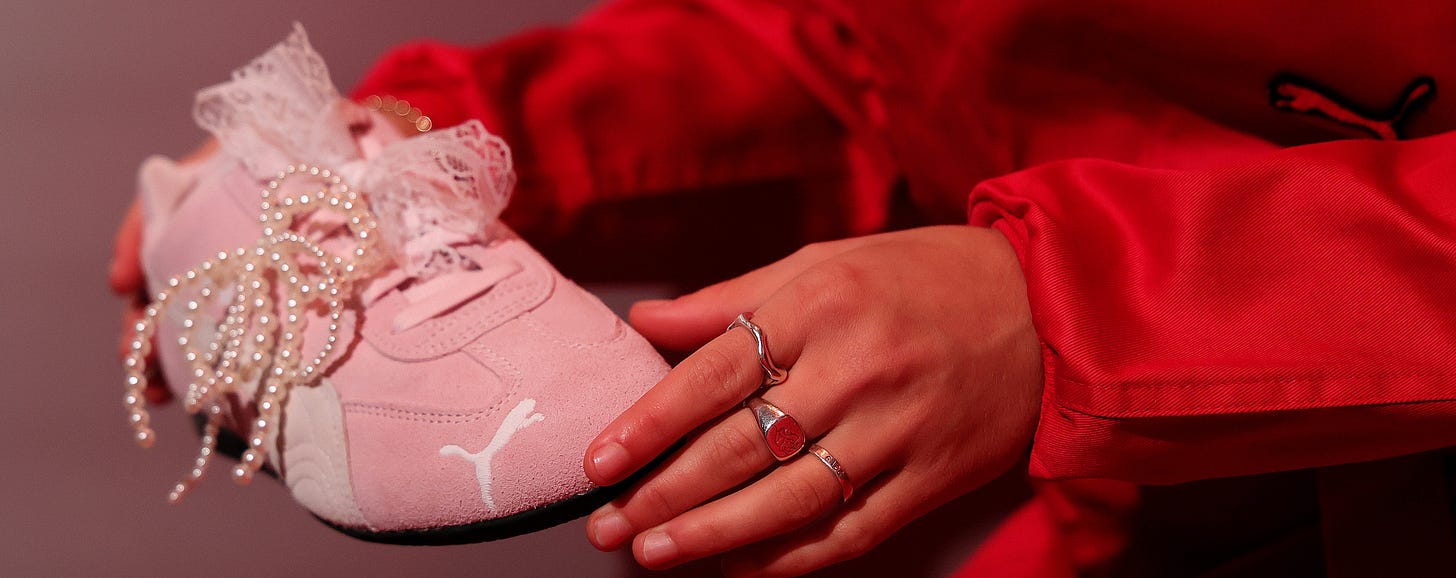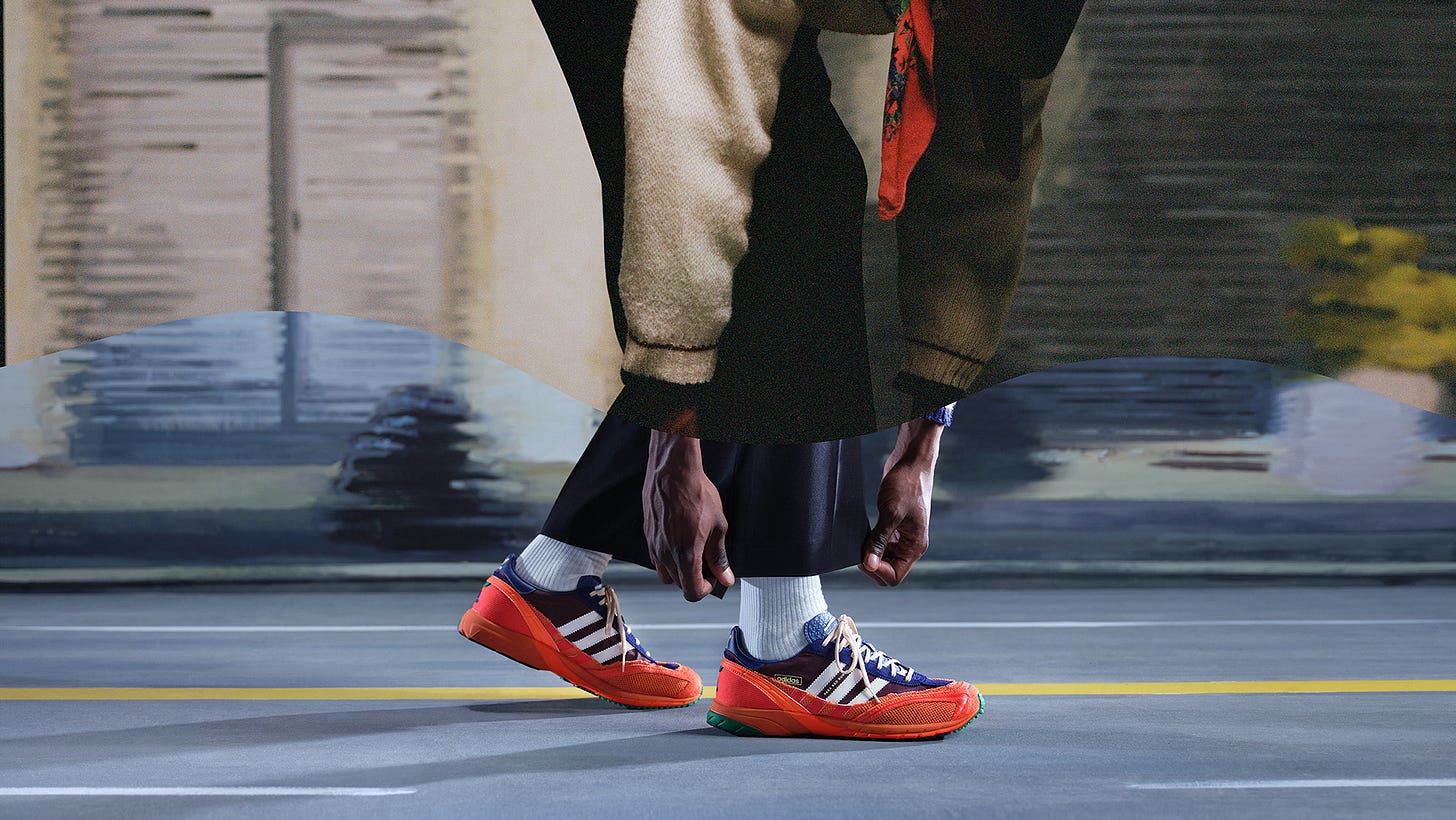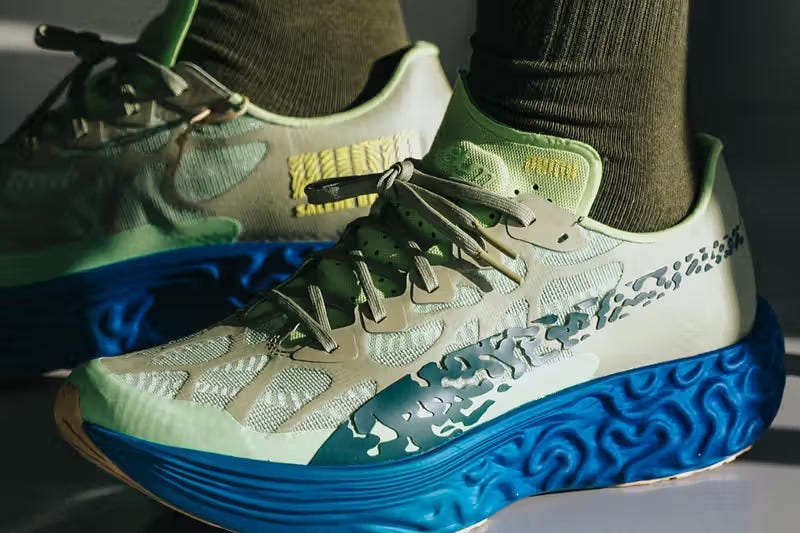Why Adidas Is Soaring and Puma Is Stalling
A tale of two German sneaker giants headed in different directions. Plus, what I'm watching in sports culture this week.
Hi friends, welcome back to SportsVerse, my bi-weekly newsletter bringing you stories you won’t find anywhere else at the intersection of sports, fashion, business and culture.
Last week was a big week in the sportswear world. Adidas and Puma both gave early updates as to how they performed in 2024.
There are several similarities between the two sneaker giants: they were both founded in Germany by brothers of the Dassler family, their HQs are situated within shouting distance from one another in the Bavarian countryside, and the brands sit next to each other as the second and third-largest sneaker brands in the world, respectively. In the not-so-distant past, they have even traded CEOs.
One thing they don’t have in common, as their results last week confirmed, is the direction in which they’re headed.
Today, we’re here to examine why 2024 was a significant year for Adidas and Puma—for very different reasons—and we’ll also consider some of the products, personalities and industry trends their progress will hinge on in the years to come.
Stick around, you don’t want to miss this one.
But first, here are three things I’m watching in sports culture this week.
Sulay Kelly was the master photographer behind many of Lewis Hamilton’s iconic photos in his last few seasons at Mercedes. He’s already delivered some incredible images of Lewis’ early Ferrari era. Take a look.
Chasing Goals is an upcoming documentary that follows Global FC, a Kansas City-based football team made up of refugees from 29 countries. It follows these young players while they train for the USA Cup, the country’s elite youth football tournament, whilst grappling with harsh societal realities. Watch the trailer.
Over 180,000 fans submitted their concepts for Manchester City’s 2026/27 season third kit, after the club and Puma launched the AI design competition in December. Now, you have until Jan. 29 to vote for a winner from 10 finalists.
Also, please don’t forget to refer your friends to SportsVerse for insights and good times they can’t get anywhere else. You can win prizes while doing it.
What’s Happening?
Puma shares fell more than 20 percent last Thursday after the brand revealed it had missed its profit target for 2024. It grew annual sales 4.4 percent year-over-year in 2024, which came in below analyst expectations.
The day before, Adidas stock surged after the sportswear giant reported a 24 percent increase in fourth quarter sales and added over €1 billion in operating profit in 2024.
Context
Adidas has staged a remarkable comeback under CEO Bjørn Gulden, after terminating its Yeezy sneaker partnership in October 2023, which at the time accounted for as much as eight percent of its annual revenue.
Adidas’ annual revenue of €23.7 billion ($24.7 billion) last year also surpassed its previous annual high of €23.6 billion which it reached in 2019. Since Gulden’s arrival at Adidas, the brand’s shares are up 45 percent.
Gulden, who only re-joined Adidas in January 2024, was hired directly from Puma, where he’d been CEO for a decade.
Puma is struggling to connect to the culture. The brand currently lacks: 1) a clear stylistic point of view; 2) dominance in any major performance sports category (e.g. soccer, basketball, running etc); 3) an influence of any kind over the sneaker market, where it’s being outperformed by several smaller competitors. Big-ticket sneaker partnerships with the likes of Rihanna and Skepta have so far failed to get people excited.
Adidas Rising
Adidas is soaring. A stellar 2024 saw the brand score unlikely wins in sports like basketball, while its retro lifestyle sneakers like Sambas and Gazelles become must-have fashion items, and a very successful Olympics helped fuel an emphatic comeback from the darkest period in the brand’s history.
The company’s hyper-focus on sports and sports culture has given it a huge advantage over its competitors over the past year, especially in football (soccer). Relaunches of iconic models like the Predator and F50 boots (cleats) have accompanied big marketing pushes with all-star ambassadors like Jude Bellingham and Zinedine Zidane blending their sporting prowess with Adidas’ more fashion-forward lines like Y-3 (the brand’s decades-old Yohji Yamamoto partnership).
An example of Adidas’ masterful sport and culture fusion came just days ago at Paris Fashion Week, when WNBA legend and Adidas’ president of women’s hoops Candace Parker walked in the brand’s Y-3 show, alongside legendary French footballer Djibril Cissé.
Puma’s Problems
Puma, meanwhile, finds itself under pressure.
There’s a shared belief among sportswear experts, analysts and even sources inside Puma, that the brand lacks both a clear stylistic point of view and an edge over its competitors in any major performance sports or lifestyle category.
This has contributed to Puma’s lack of a cultural pull in fashion and streetwear. Nike and Adidas have been important sneaker players for decades, but in recent years, even more unlikely, previously uncool names have become beneficiaries of the sportstyle sneaker trend. That list includes New Balance, Asics, On, Salomon, Mizuno, Hoka, Saucony, Merrell and several others. But Puma seems to have missed out completely.
Now, the brand is attempting to remedy its lack of influence on the sneaker market. In the past year, as consumers became increasingly interested in motorsports-inspired products, the brand upped production and marketing of its Speedcat shoes. It also pushed its retro Mostro sneakers to take advantage of the low-rise sneaker trend and offer an alternative to Sambas and Gazelles.
Though it’s still early days, Puma simply isn’t selling these shoes in large enough volumes to move the needle. Meanwhile, big sneaker partnerships signed in recent years with Skepta, A$AP Rocky, and Rihanna’s Fenty haven’t had the desired effect.
Growth is decelerating at a time when the brand is being squeezed on all sides. Behind it is a pack of fast-growing brands looking to take its spot, including New Balance and China’s Anta, while newer entrants to the sports footwear world like Skechers also pose a threat. Further back are hungry disruptor brands like On and Hoka which are scaling at breakneck pace.

But could there be change on the horizon? In July, Puma announced Salehe Bembury—a prolific sneaker designer and collaborator—would be coming on board to assist the brand’s basketball team in designing the signature shoe of the recently signed Pacers’ guard Tyrese Haliburton, and also taking part in future athlete recruitment.
It was the first move the brand had made in a long time that got sneakerheads excited. It blended Bembury’s cultural clout and lifestyle sneaker expertise with Puma’s performance credentials and athlete roster. The first shoe he created for the brand—teased on IG last week—looks more like a running silhouette rather than a basketball shoe, but it’s already a great improvement.
If anyone can make an uncool brand, cool, it’s this guy. He even did it for Crocs.
That’s all for today, friends. Thanks for coming along for the ride. One of my favourite reads so far this week was my guy Mike Sykes’ breakdown on how and where sneaker brands have showed up during Paris Fashion Week. He also has some interesting insights of his own as to why Puma is struggling to keep up with its competitors.
Until next time!
DYM











Good read!
Always the best read.